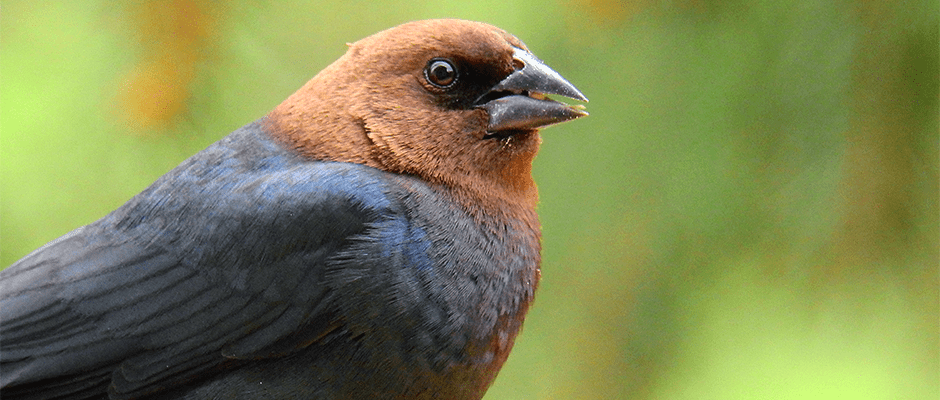Share this article
Can colored lights decrease aircraft bird strikes?
LED lights have been proposed for use in airplanes to reduce bird strikes, but would these lights actually cause avoidance behavior in birds?
Researchers recently tested how different wavelengths of light affect the behavior of brown-headed cowbirds (Molothrus ater), a species that has been involved in bird strikes.
“If birds can detect aircraft earlier because of the lights, hopefully they can do avoidance maneuvers earlier and decrease the chance of bird strikes,” said Esteban Fernandez-Juricic, a professor of biological sciences at Purdue University and lead author of the study published in PeerJ.
While researchers have found that lights on aircraft enhance detection from birds, they hadn’t studied if they lead to avoidance behavior, Fernandez-Juricic said. In this study, he and his colleagues took information from their previous papers on how brown-headed cowbirds perceive light and used mathematical models to estimate which wavelengths are more conspicuous to them.
Determining that UV, blue, green and red portions of the spectrum stimulate cowbird retina to a large degree, the team tested avoidance behaviors. They also included white lights in the study, since those are often used on aircraft.
The team released the birds into an enclosure where they could make a decision to fly left or right. On one side, a light would be on. On other side, it would be off. Researchers took turns exposing the birds to UV, blue, green, red and white light and then measured if they significantly avoided, were attracted to or were indifferent to the lights in any way.
“What we found out, to our surprise a little bit, was birds behaved indifferently to the UV light, white light and green light,” Fernandez-Juricic said. “This is relevant because many people out there, particularly in the aviation wildlife community, have said because some bird species can see UV light, they have got to use UV lights. Our results say that brown-headed cowbirds can see UV light but they react indifferently to it.”
However, the birds significantly avoided blue and red lights. While researchers don’t yet know why this is the case, Fernandez-Juricic said, it could inform future management decisions.
The next step, he said, is to consider how different properties, such as pulsing or looming lights, affects the birds.
Fernandez-Juricic hopes to expand the study to other species known to collide with aircraft, such as Canada geese (Branta canadensis), raptors, gulls and pigeons. If they all avoid the same wavelengths, there could be some immediate management implications, he said.
“If the avoidance varies between species, we’re not necessarily back to square one, but we have to be a little more creative in terms of developing lights with peaks at different parts of the spectrum and test those lights,” he said.
The light avoidance idea could also be expanded to help minimize collisions between eagles and wind turbines, he said, and possibly can help deal with birds crashing into buildings.
“We believe we made a really important lead in terms of getting closer to the solution,” he said.
Header Image: Red and blue lights deter brown-headed cowbirds, researchers found. ©Ken GIbson








